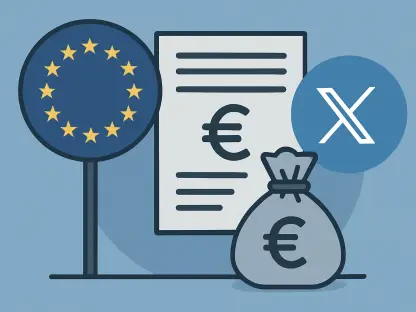I’m thrilled to sit down with Nia Christair, a true authority in the mobile technology space. With a robust background in mobile gaming, app development, device and hardware design, and enterprise mobile solutions, Nia brings a wealth of insight into the evolving landscape of connectivity and innovation. Today, we’re diving into Nokia’s recently unveiled strategy revamp, exploring how the company plans to harness the AI boom, restructure its operations, and position itself for future growth in a rapidly changing tech world. Our conversation touches on the strategic priorities driving this transformation, the shift to a leaner operating model, and the leadership changes shaping Nokia’s path forward.
Can you walk us through the overarching goals of Nokia’s strategy revamp as presented during the Capital Markets Day?
Absolutely. Nokia’s strategy revamp, rolled out under CEO Justin Hotard, is a bold move to reposition the company as a leader in the AI-driven tech landscape. The core goal is to capitalize on the AI supercycle by leveraging Nokia’s strengths in secure, advanced connectivity. They’ve outlined a clear vision to drive growth through innovation, streamline operations, and deliver sustainable financial returns. It’s about aligning the company with emerging trends like AI and cloud computing while maintaining their edge in connectivity solutions. The implementation is set for January 1, 2026, to ensure a smooth transition and proper groundwork for such a significant shift.
What prompted this major shake-up under the new CEO’s leadership?
The shake-up under Justin Hotard, who stepped into the role in April, comes from a need to adapt to the accelerating pace of technological change, particularly in AI. Nokia sees itself as a trusted western provider in a competitive market, and Hotard has emphasized the urgency of seizing opportunities in the AI supercycle. This revamp is about refocusing resources, sharpening their competitive edge, and addressing gaps in their previous strategy to stay ahead of industry disruptions.
How does Nokia’s focus on accelerating in AI and cloud technology shape its position in today’s tech environment?
Nokia’s push into AI and cloud technology is a game-changer. It positions them at the forefront of a critical shift in the industry where data processing and connectivity demands are skyrocketing. By integrating AI and cloud capabilities, Nokia can offer more intelligent, scalable solutions to telecom providers and enterprises alike. This move not only strengthens their relevance but also places them in direct competition with other tech giants vying for dominance in data-driven ecosystems.
What does leading the next era of mobile connectivity with AI-native networks and 6G mean for the future of Nokia’s offerings?
Leading in AI-native networks and 6G is about redefining how mobile connectivity works. AI-native networks use artificial intelligence to optimize performance, predict issues, and enhance user experiences in real-time. Meanwhile, 6G represents the next frontier—think ultra-fast speeds, massive device connectivity, and low latency that could revolutionize industries like healthcare or autonomous vehicles. For Nokia, this means building the foundation for future-proof infrastructure that will power tomorrow’s digital world.
Can you share how co-innovating with customers and partners will drive Nokia’s growth?
Co-innovation is all about collaboration. Nokia is looking to work closely with customers and partners to tailor solutions that meet specific needs, whether it’s for telecom operators or enterprises. For example, by jointly developing technologies or customizing network solutions, Nokia can create value that’s directly aligned with market demands. This approach not only fosters stronger relationships but also sparks innovation that keeps Nokia ahead of the curve.
When Nokia talks about focusing capital where it can differentiate, what specific areas are they prioritizing?
Nokia is being very strategic about where they invest. They’re prioritizing areas like AI-driven network solutions, cloud integration, and next-gen connectivity like 6G, where they can stand out from competitors. It’s about doubling down on their unique strengths—secure, high-performance connectivity—and avoiding spreading resources too thin across less impactful segments. This focused investment ensures they’re building leadership in high-growth, high-value spaces.
How does Nokia plan to unlock sustainable returns through this new strategy?
Sustainable returns come from a mix of operational efficiency and tapping into lucrative markets. By streamlining their operating model and focusing on high-growth areas like AI and data center infrastructure, Nokia aims to boost profitability. They’ve set ambitious financial targets, like achieving a comparable operating profit of €2.7 to €3.2 billion by 2028, which shows their confidence in generating long-term value through smarter investments and innovation-driven growth.
Why did Nokia decide to consolidate from four operating segments into just two, and what does this restructuring achieve?
Moving from four segments to two—Network Infrastructure and Mobile Infrastructure—is about simplification and focus. The previous structure was likely too fragmented, making it harder to allocate resources efficiently or respond quickly to market shifts. This consolidation allows Nokia to streamline decision-making, reduce overlap, and sharpen their focus on core growth areas. It’s a strategic move to become more agile and competitive in a fast-paced industry.
How do the new Network Infrastructure and Mobile Infrastructure segments differ in their focus and objectives?
Network Infrastructure is positioned as a growth engine, encompassing Optical Networks, IP Networks, and Fixed Networks. Its aim is to capitalize on global AI and data center expansion while serving telecom clients. On the other hand, Mobile Infrastructure combines Core Networks, Radio Networks, and Technology Standards, focusing on advancing core and radio tech with a long-term view toward AI-native networks and 6G. Essentially, one segment drives immediate growth through infrastructure, while the other builds the future of mobile connectivity.
What impact will the global AI and data center build-out have on the Network Infrastructure segment?
The global build-out of AI and data centers is a massive opportunity for the Network Infrastructure segment. As companies worldwide ramp up their data processing capabilities, there’s a huge demand for robust, high-speed networking solutions like optical and IP networks. Nokia can provide the backbone for these data centers, ensuring seamless connectivity and scalability. This positions the segment to capture significant market share in a booming sector.
How does the recent $1 billion AI infrastructure investment play into the growth of this segment?
That $1 billion investment is a major boost for Nokia’s Network Infrastructure segment. It validates their direction and provides the capital to scale up their capabilities in AI-driven networking solutions. It’s likely being channeled into R&D, expanding product offerings, or enhancing partnerships, all of which strengthen Nokia’s ability to meet the growing demands of AI and data center markets. It’s a clear signal of confidence in their potential to lead in this space.
Looking at the Mobile Infrastructure segment, what’s the long-term vision for developing AI-native networks and 6G?
The long-term vision for Mobile Infrastructure is to create networks that are inherently intelligent and future-ready. AI-native networks will use machine learning to self-optimize, predict traffic patterns, and reduce downtime, which is critical for massive-scale connectivity. As for 6G, Nokia is laying the groundwork for standards and technologies that will enable unprecedented speeds and device integration. It’s about anticipating the needs of a hyper-connected world a decade from now and ensuring Nokia is at the forefront.
Can you tell us more about the leadership changes accompanying this strategic overhaul?
Certainly. Nokia is making some pivotal leadership adjustments to align with the revamp. Tommi Uitto, previously president of Mobile Networks, is stepping down from the group leadership team, signaling a shift in how that area will be managed. Raghav Sahgal, formerly head of Cloud and Network Services, is stepping into the role of chief customer officer to strengthen customer engagement. Additionally, Patrik Hammaren has been appointed president of Technology Standards, which underscores a focus on driving innovation through standards-setting. These changes reflect a deliberate effort to match leadership with strategic priorities.
What do you think Raghav Sahgal’s new role as chief customer officer will bring to Nokia’s relationships with its clients?
Raghav Sahgal’s appointment as chief customer officer is a strategic move to deepen Nokia’s customer-centric approach. With his background in cloud and network services, he’s well-equipped to understand client needs and translate them into tailored solutions. His role will likely focus on building stronger, more collaborative partnerships, ensuring that Nokia’s innovations directly address customer pain points. This could lead to greater loyalty and more co-innovation opportunities down the line.
What is your forecast for the impact of AI and 6G on the future of mobile connectivity?
I believe AI and 6G will fundamentally transform mobile connectivity in ways we’re just beginning to grasp. AI will make networks smarter, more adaptive, and efficient, enabling seamless experiences even as data demands explode. 6G, on the other hand, will unlock possibilities like holographic communication, advanced IoT ecosystems, and real-time applications we can’t yet imagine. For Nokia and the industry at large, these technologies will redefine what’s possible, creating a hyper-connected world where latency and bandwidth constraints are virtually nonexistent. The next decade will be incredibly exciting as these innovations unfold.









